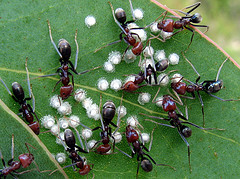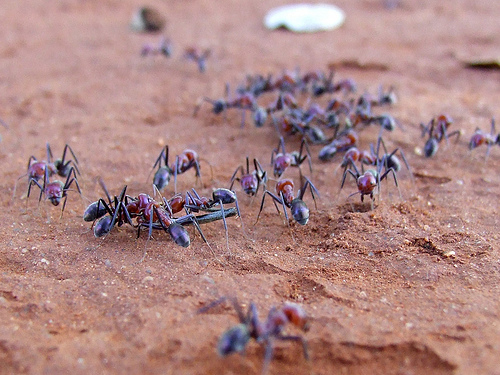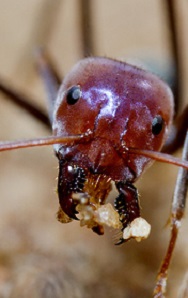Habitat
Iridomyrmex purpureus is a dominant ant species; meaning that these types of ants occupy leading positions in competitive hierarchies in their environment and are able to displace species below them (Greenslade 1976). I. purpureus is distributed across much of coastal and inland eastern Australia, and associates with Eucalyptus species in the woodlands (Ettershank and Ettershank 1982).
Considering
this ant species is omnivorous, the location on and under these
trees can be a great place for foraging insect cadavers and
occasionally live insect prey. The ants can tunnel nests
underground leading to extremely complex systems, but there is
commonly a mound at the exit points, in which ants can be removed
for studies (Gibbs 2004). Large colonies are commonplace
along Sydney’s country roadsides with nests that can contain 64,000
ants with ranges up to 650 meters (Wildlife of Sydney).
can tunnel nests
underground leading to extremely complex systems, but there is
commonly a mound at the exit points, in which ants can be removed
for studies (Gibbs 2004). Large colonies are commonplace
along Sydney’s country roadsides with nests that can contain 64,000
ants with ranges up to 650 meters (Wildlife of Sydney).
Much
of Australia is undeveloped, making the large nesting grounds for
the ant possible. Plentiful amounts of gravel and open land
allow for copious amounts of nesting materials. Left alone in
the wilderness, these ants tend to develop relationships with other
colonies, which lead to the combination of neighboring nests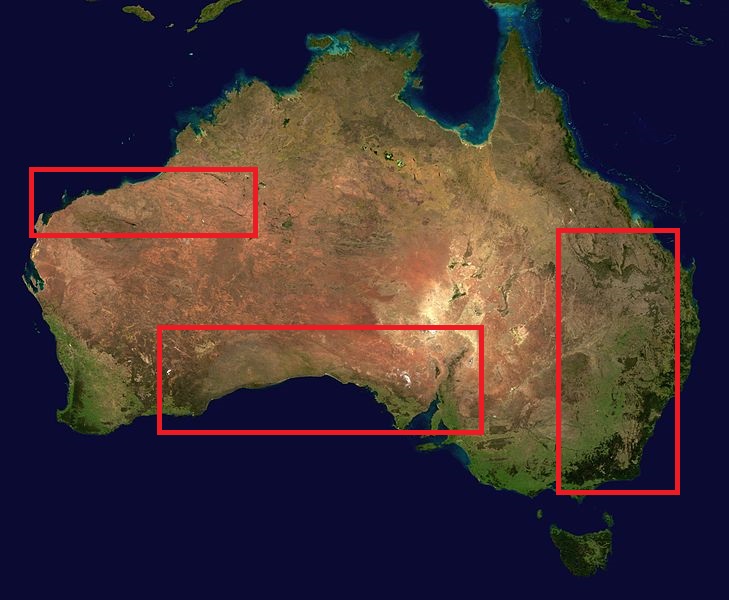 .
.
Dominant ant species, such as I. purpureus are most
successful in warm, open habitats (Anderson 1995). The
notion that this dominant ant species is best suited for warm
climates substantiates the fact that these ants live widely
throughout Australia, where the average temperature rarely dips
below 55˚F and is consistently in the mid 80s during the summer
months (Courtesy Weather.com). This habitat resembles that of
the Red Kangaroo, to learn more about the Kangaroo click
HERE. The Meat Ant does very well in
its environment, however it does share the land with a large variety
of other creatures, some of which can be detrimental.
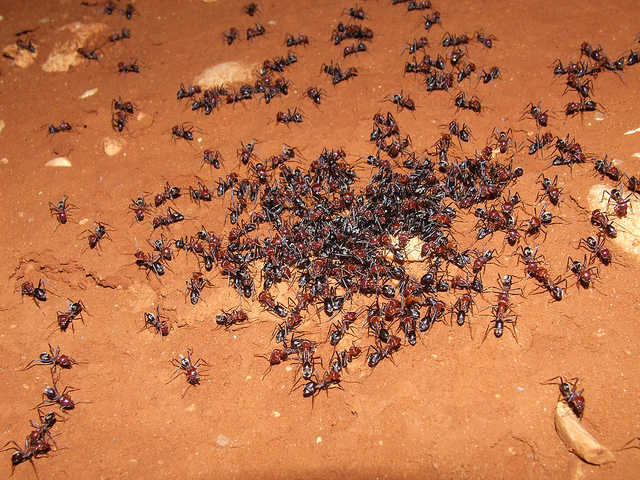
Similar yet different, the Green Ground Beetle (Calosoma schayeri) shares a habitat with the I. purpureus. The Ground Beetles larvae feed on small insects making them predators to the meat ant (Australian National Botanic Gardens 2013). Despite sharing an environment with predators, it is key to note a few species that share a mutual beneficial, or symbiotic, relationships with the I. purpureus. The meat ant consistently develops advantageous connections with caterpillars of different species of butterflies. These caterpillars are know to secrete types of glucose rich liquids to the ants, which in turn protect the caterpillars from potential predators (Wildlife of Sydney 2007).
Continue to the Adaptation page
